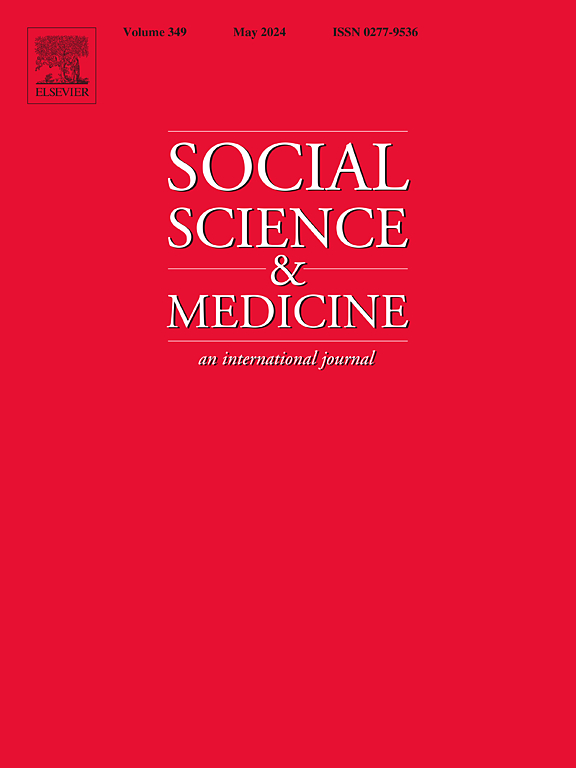Person-first and identity-first disability language: Informing client centred care
IF 4.9
2区 医学
Q1 PUBLIC, ENVIRONMENTAL & OCCUPATIONAL HEALTH
引用次数: 0
Abstract
Background
Addressing individuals with a disability can entail the use of person-first (person with a disability) or identity-first language (disabled person). However, there has been debate about use of these terms, yet there is a lack of evidence to inform preference across people with a broad range of health conditions, demographics, or health related factors.
Methods
A 42-item survey measuring demographic and health condition factors, implicit and explicit preference for person-first and identity-first language use was open for completion by individuals with a self-reported health condition between July 7, 2021 and November 30, 2021. Recruitment was undertaken via posts on relevant social media sites and through community support and advocacy organisations.
Results
Data analysis included responses from 875 valid surveys. Mean age of participants was 39.7 (SD: 13.7) years. There were 89 (10.2%) male, 637 female (72.8%) and 149 (17.0%) non-binary/other participants. When referring to themselves, participants most often reported use of identity first language (n = 335, 42.2%), followed by person-first language (n = 272, 34.1%), then both interchangeably (118, 23.7%). When referring to others, participants most often used person first language (n = 312, 39.4%), followed by both interchangeably (269, 34.0%), then identity-first language (n = 211, 26.6%). Disability language preference varied across health conditions, with participants with neurodevelopmental conditions most likely to use identity-first language and participants with digestive conditions most often preferencing person-first language. Participants who were younger and of non-binary gender preferred use of identity-first language. Appropriate use of identity-first language was rated significantly higher for people with a disability/health condition and family/friends than for third-party representatives, including healthcare professionals, educators, media and the general public.
Conclusion
Findings highlight the need to understand health condition and disability language preference in a more nuanced way to promote respectful language use when addressing people in the context of their disability/health condition.
以人为本和以身份为本的残疾语言:以客户为中心的护理。
背景:在称呼残疾人时,可以使用 "人 "为先(残疾人)或 "身份 "为先(残疾人)的语言。然而,关于这些用语的使用一直存在争论,但缺乏证据来说明具有各种健康状况、人口统计学或健康相关因素的人的偏好:在 2021 年 7 月 7 日至 2021 年 11 月 30 日期间,对自述健康状况的个人开放了一项 42 个项目的调查,以测量人口统计学和健康状况因素、对 "以人为本 "和 "以身份为本 "语言使用的隐性和显性偏好。通过相关社交媒体网站以及社区支持和倡导组织进行招募:数据分析包括 875 份有效调查问卷的回复。参与者的平均年龄为 39.7 岁(标准差:13.7 岁)。男性参与者 89 人(10.2%),女性参与者 637 人(72.8%),非二元/其他参与者 149 人(17.0%)。在提及自己时,参与者最常使用的是身份第一语言(335 人,42.2%),其次是人称第一语言(272 人,34.1%),然后是两者交替使用(118 人,23.7%)。在提及他人时,参与者最常使用的是以人为第一语言(312 人,39.4%),其次是两者互换使用(269 人,34.0%),然后是以身份为第一语言(211 人,26.6%)。不同健康状况的参与者对残疾语言的偏好各不相同,患有神经发育疾病的参与者最有可能使用身份第一语言,而患有消化系统疾病的参与者则最常使用人称第一语言。年龄较小和性别非二元的参与者更倾向于使用身份优先语言。残疾人/健康状况患者和家人/朋友对适当使用身份优先语言的评价明显高于第三方代表,包括医疗保健专业人员、教育工作者、媒体和公众:研究结果凸显了以更细致的方式理解健康状况和残疾语言偏好的必要性,以促进在针对残疾/健康状况的情况下使用尊重他人的语言。
本文章由计算机程序翻译,如有差异,请以英文原文为准。
求助全文
约1分钟内获得全文
求助全文
来源期刊

Social Science & Medicine
PUBLIC, ENVIRONMENTAL & OCCUPATIONAL HEALTH-
CiteScore
9.10
自引率
5.60%
发文量
762
审稿时长
38 days
期刊介绍:
Social Science & Medicine provides an international and interdisciplinary forum for the dissemination of social science research on health. We publish original research articles (both empirical and theoretical), reviews, position papers and commentaries on health issues, to inform current research, policy and practice in all areas of common interest to social scientists, health practitioners, and policy makers. The journal publishes material relevant to any aspect of health from a wide range of social science disciplines (anthropology, economics, epidemiology, geography, policy, psychology, and sociology), and material relevant to the social sciences from any of the professions concerned with physical and mental health, health care, clinical practice, and health policy and organization. We encourage material which is of general interest to an international readership.
 求助内容:
求助内容: 应助结果提醒方式:
应助结果提醒方式:


